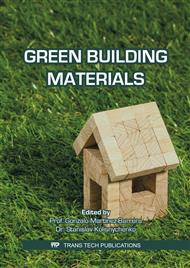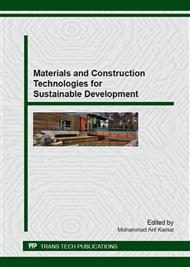p.31
p.47
p.63
p.77
p.89
p.97
p.107
p.123
p.133
Building Operational Energy Optimization Technique Waste Filled Cavity Wall
Abstract:
Emerging crises for resources and energy has became one of the major global issues. Unstoppable population and urban growth is demanding shelter. The figure for estimated housing shortage across the world according to the internationally recommended standards is 428,700,000 units. By the year 2030, an additional 3 billion people, about 40 percent of the world’s population, will need access to housing. This translates into a demand for 96,150 new affordable units every day and 4000 every hour.(United Nation –Habitate:2005)(128). All this unstoppable global population growth is resulting in high demand supply gap between resources and thus present trend concentrate to satisfy and minimize this gap. This shooting urbanization problem is leading towards diversion for easy and fast construction methodology.Along with this the problems associated to it are also increasing globally. The problem of Urban Heat Island and Urban Canyon Effect, CO2 emission , Green House Effect , Resource depletion and all such problems are demanding global attention to overcome it and make habitant sustainable for safeguarding future generations to come. The major hurdle for application of sustainable construction is barrier of human mind who concentrates more on initial cost of construction and negligence towards operations energy cost and pay back period calculations.The aim of the paper is to show feasibility of application of waste in construction elements like wall by analysing thermo resistive property of such waste filled cavity wall and equivalence cooling effect calculations for conventional clay brick wall , AC sheets , cavity wall and various waste filled cavity wall by making model and process of simulation using Ansys Fluent .The results of research work shows feasibility of adopting cavity wall and waste fill cavity wall for construction of wall because of its high thermoresistive property so as to mitigate global problems like Urban Heat Islands and operational energy consumption.
Info:
Periodical:
Pages:
107-122
Citation:
Online since:
October 2015
Authors:
Keywords:
Price:
Сopyright:
© 2016 Trans Tech Publications Ltd. All Rights Reserved
Share:
Citation:



